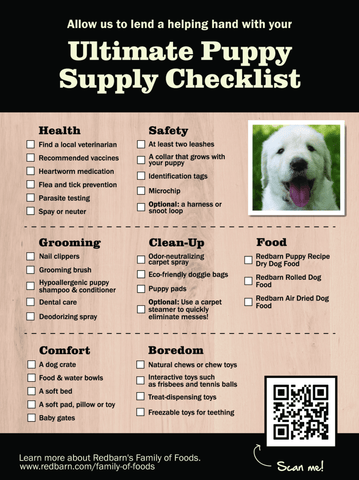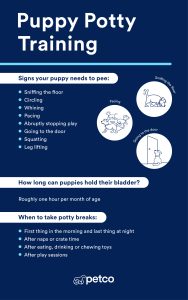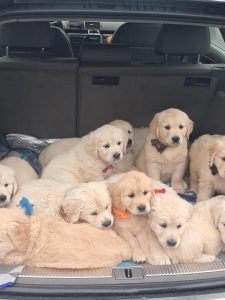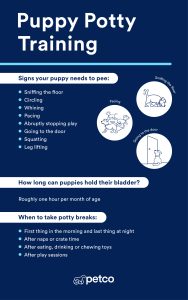Bringing a new puppy home is exciting, but it can also be a little overwhelming. You want your furry friend to explore safely, without getting into trouble or hurting themselves.
That’s where puppy proofing comes in. By making a few simple changes around your home, you can create a safe space that keeps your puppy happy and protects your belongings. Keep reading, because these puppy proofing tips will help you avoid common mistakes and enjoy every moment with your new best friend.
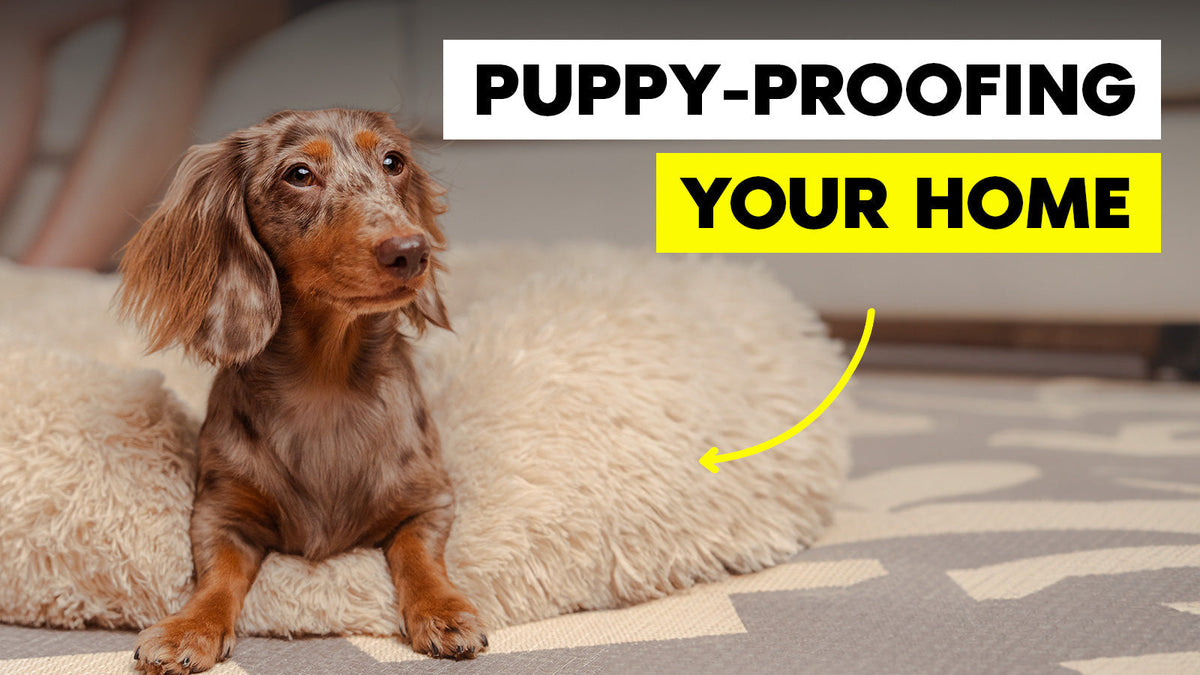
Credit: thebrooklyn.co.nz
Preparing Your Space
Getting your home ready for a new puppy keeps them safe and happy. It helps avoid accidents and damage.
Start by looking around your space. Find things that could hurt your puppy or that they might chew on.
Identify Common Hazards
Look for small items your puppy can swallow. Toys, coins, and plastic can be dangerous. Check places they can reach.
Watch for sharp objects like knives or pins. These can cause injury if your puppy bites or steps on them.
- Small objects on floors or low tables
- Sharp tools or items within reach
- Open trash bins with food or wrappers
- Loose strings, rubber bands, or hair ties
Secure Electrical Cords
Puppies like to chew, and electrical cords are tempting. Chewing cords can cause shocks or fires.
Keep cords out of sight or use cord protectors. Tape cords to walls or behind furniture to keep them safe.
- Hide cords inside cable covers
- Use cord clips to fasten cords to walls
- Unplug unused devices to reduce risk
- Offer safe chew toys to distract your puppy
Remove Toxic Plants
Some plants can make your puppy sick. Remove or place toxic plants where your puppy cannot reach.
Learn which plants are harmful. Replace them with pet-safe options to keep your puppy safe.
- Common toxic plants: lilies, azaleas, and philodendrons
- Check all indoor plants for safety
- Keep plants on high shelves or in closed rooms
- Choose non-toxic plants like spider plants or bamboo

Credit: www.dwdogtraining.com
Safe Zones For Puppies
Creating safe zones helps puppies feel secure in your home. It also keeps them from getting hurt.
Safe zones give puppies a space to rest and play without danger. This guide covers key tips to set up these areas.
Create A Puppy Play Area
A puppy play area keeps your pet safe and entertained. Choose a spot free from wires and small objects.
- Pick a quiet room or corner with enough light.
- Use soft bedding and toys for comfort.
- Remove anything that can be chewed or swallowed.
- Make sure the floor is easy to clean.
Choose The Right Crate
A good crate offers a safe retreat for your puppy. It also helps with training and housebreaking.
| Feature | Why It Matters |
| Size | Enough space to stand and turn around |
| Ventilation | Good airflow to keep puppy cool |
| Durability | Strong materials to prevent escapes |
| Easy to Clean | Removable tray or washable parts |
Use Baby Gates Effectively
Baby gates block off unsafe areas. They help control where your puppy can go.
Tips for using baby gates:
- Place gates at doorways to stairs or kitchens.
- Choose gates that are tall enough to prevent jumping.
- Secure the gates firmly to walls or door frames.
- Check regularly for gaps or loose fittings.
Protecting Furniture And Belongings
Bringing a puppy home is exciting but can be hard on your furniture. Puppies love to chew and explore. This can cause damage to your belongings.
Taking simple steps helps keep your furniture safe. It also protects your personal items from harm.
Use Chew-proof Covers
Chew-proof covers protect sofas, chairs, and cushions. They stop puppies from biting or scratching your furniture. These covers are made from tough materials like nylon or canvas.
You can also use slipcovers that are easy to clean. If a puppy chews, you only need to wash or replace the cover.
Store Valuables Out Of Reach
Puppies are curious and may chew on items that are harmful or valuable. Keep small objects, electronics, and important papers away from their reach. Use drawers, cabinets, or high shelves to store these items safely.
- Put jewelry in closed boxes
- Keep remote controls on high tables
- Store chargers and cords inside cabinets
- Hide important documents in drawers
Prevent Access To Trash
Trash cans can be dangerous for puppies. They might eat spoiled food or sharp objects. Use trash bins with secure lids or place them inside a cabinet. This keeps your puppy safe and your home clean.
- Choose trash cans with locking lids
- Use childproof locks on cabinets
- Train your puppy to avoid trash areas
Kitchen Safety Measures
The kitchen can be a dangerous place for puppies. It is important to keep your pup safe by taking simple steps. These measures help prevent accidents and protect your puppy from harmful substances.
Here are some key kitchen safety tips to puppy-proof your home. Focus on securing food and utensils, avoiding toxic foods, and locking cabinets.
Keep Food And Utensils Secure
Keep all food and kitchen tools out of your puppy’s reach. Puppies are curious and may try to eat or chew unsafe items. Store food in high cabinets or the refrigerator. Put knives and sharp utensils away safely.
- Use sealed containers for food storage
- Place utensils in drawers or holders
- Clean spills immediately to avoid attracting pups
- Keep trash bins covered or inside cabinets
Avoid Toxic Foods
Some common kitchen foods can poison puppies. Keep these foods far from your dog’s reach. Teach family members about these dangers as well.
| Food | Why It Is Dangerous |
| Chocolate | Contains theobromine, toxic to dogs |
| Grapes and Raisins | Can cause kidney failure |
| Onions and Garlic | Damage red blood cells |
| Alcohol | Can cause poisoning and death |
| Caffeine | Leads to heart and nervous system problems |
Use Childproof Locks On Cabinets
Install childproof locks on cabinets and drawers. Puppies can open doors and find dangerous items inside. Locks keep cleaning supplies and sharp objects safe.
- Choose locks that are easy for adults to use
- Check locks regularly for wear or damage
- Use locks on all cabinets within your puppy’s reach
- Teach family members about the importance of these locks
Bathroom Precautions
Keeping your puppy safe in the bathroom is essential. Curious puppies can get into trouble quickly. Here are some tips to puppy-proof this area.
Follow these guidelines to ensure your bathroom is a safe place for your furry friend.
Store Cleaning Products Safely
Cleaning products can be harmful if ingested by puppies. Always store them out of reach.
- Use high shelves or cabinets for storage
- Ensure cabinet doors are securely closed
- Consider child-proof locks for added safety
Keep Toilets Closed
Puppies might drink from the toilet, which is unsafe. Always keep the toilet lid down.
Avoid Leaving Personal Items Out
Puppies love to chew on things. Personal items left out can be tempting and dangerous.
| Item | Potential Risk |
| Razors | Injury |
| Soap | Upset stomach if ingested |
| Towels | Choking hazard |
Outdoor Safety Tips
Bringing a puppy into your home is exciting. Ensuring their safety outdoors is important. Here are some tips to keep your puppy safe outside.
Outdoor safety prevents accidents and keeps your puppy healthy. Follow these guidelines to create a secure environment.
Check Fencing And Gates
Fencing and gates keep your puppy in the yard. Check for gaps or holes where they might escape. Make sure gates close securely to prevent wandering.
Puppies are curious and can squeeze through small spaces. Regularly inspect your fence and gates to ensure they are intact and safe.
Remove Harmful Plants And Chemicals
Some plants and chemicals can be harmful to puppies. Identify toxic plants in your yard and remove them. Store chemicals like fertilizers and pesticides out of reach.
Puppies explore with their mouths, so keeping harmful substances away is crucial. Check your yard regularly for any new dangers.
- Avoid plants like azaleas and lilies
- Store fertilizers in locked sheds
- Use pet-safe gardening products
Supervise Outdoor Play
Always supervise your puppy during outdoor play. This helps prevent accidents and ensures they are not getting into trouble.
Watch for potential hazards like traffic, other animals, or unsafe areas. Stay close to guide your puppy and keep them safe.
Training And Supervision
Puppy proofing your home is important for safety. Training and supervision help your puppy learn good habits.
Watching your puppy closely keeps them safe from danger. Training teaches them how to behave well.
Teach Basic Commands
Start teaching simple commands like “sit,” “stay,” and “come.” These commands help control your puppy.
Use short training sessions to keep your puppy focused. Reward good behavior with treats or praise.
- “Sit” helps your puppy stay calm.
- “Stay” prevents your puppy from running into danger.
- “Come” brings your puppy back to you quickly.
Monitor Puppy Behavior
Watch your puppy to notice signs of trouble or stress. Early detection helps stop bad habits.
Supervise your puppy especially in new areas. Puppies explore and may chew unsafe items or hurt themselves.
- Look for chewing on cords or furniture.
- Notice if your puppy seems anxious or scared.
- Keep an eye on potty training progress.
Establish A Routine
Set a daily schedule for feeding, play, and potty breaks. A routine helps your puppy feel safe and learn faster.
Consistent times reduce accidents and improve training success. Puppies do well with clear expectations.
- Feed your puppy at the same times each day.
- Take regular potty breaks after eating and playing.
- Include daily training sessions in the routine.
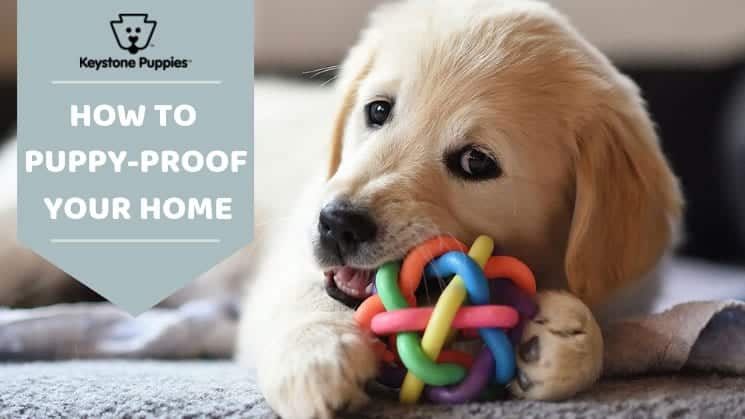
Credit: www.keystonepuppies.com
Frequently Asked Questions
How Do I Start Puppy Proofing My Home?
Begin by removing small objects and toxic plants. Secure electrical cords and block access to dangerous areas. Use baby gates to limit space and keep cleaning supplies out of reach.
What Are The Most Common Puppy Hazards Indoors?
Common hazards include electrical wires, small chewable items, toxic plants, and accessible chemicals. Puppies also risk injury from unsecured furniture and open trash bins.
How Can I Protect My Furniture From Puppy Damage?
Use protective covers and sprays designed for pets. Provide plenty of chew toys and train your puppy to avoid furniture. Regular exercise can reduce destructive behavior.
When Should I Begin Puppy Proofing?
Start puppy proofing before bringing your new puppy home. Early preparation ensures a safe environment and helps your puppy adjust quickly and safely.
Conclusion
Puppy proofing keeps your home safe and your puppy happy. Small changes make a big difference every day. Watch out for cords, chemicals, and sharp objects. Create a space where your puppy can explore safely. Remember, patience and care help your puppy learn fast.
A safe home means less stress for you and your pet. Start early to build good habits and trust. Your puppy will grow healthy and strong in a safe place. Keep these tips in mind for a happy life together.

Emily Barker is the founder of ChillDogLife.com, a space dedicated to helping pup parents discover the best dog products, lifestyle tips, and cozy ideas for happier homes.
A lifelong dog lover, Emily combines her passion for pets with a knack for research to share trusted recommendations on everything from toys and furniture to health and everyday care.
Her goal is simple: to make life easier, stylish, and more joyful for dogs and the people who love them.
